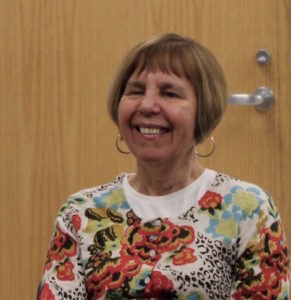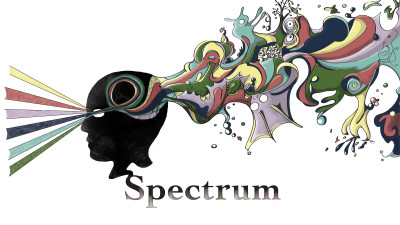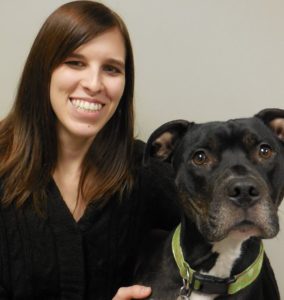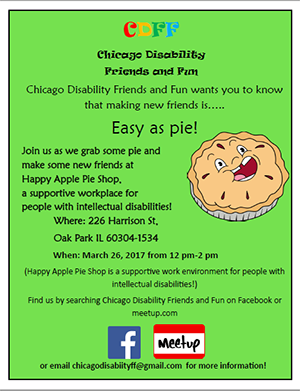For Guide Dogs and Humans, A Perfect Match Has Many Factors
by Beth Finke
Last Thursday my Seeing Eye dog Whitney and I took a train to Champaign to give a presentation to an animal sciences class at the University of Illinois. I speak to this class once a semester, and this time I spent a fair amount of the hour going over some of the qualifications necessary to become a guide dog instructor.
Most guide dog schools require instructors to have a college degree and then do an apprenticeship, and apprenticeships can last as long as four years. I hope I did a decent job explaining how complicated it can be to train dogs, train people, and then make a perfect match between the human and canine. That way the college kids might appreciate why the apprenticeships last so long.
Once apprentices finish their training and become full-time Seeing Eye instructors, they’re assigned a string (a group) of dogs and given four months to train that string. Throughout the training, instructors pay close attention to each dog’s pace and pull, and they make careful notes about how each dog deals with distractions, what their energy level is, and all sorts of other characteristics. And then? We blind students fly in from all over North America to be matched — and trained — with a new dog.
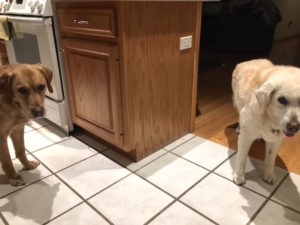
Whitney and Hanni have an aloof tolerance for one another, but not much more. Whit wants to roughhouse. Hanni the doyenne is so over that. (Photo: Nancy Bolero.)
Seeing Eye instructors have to be as good at evaluating people as they are evaluating dogs. Our instructors review our applications before we arrive on the campus in Morristown and then ask us tons more questions when we get there. Instructors take us on “Juno” walks (they hold the front of the harness to guide us through all sorts of scenarios to get an idea of how fast we like to walk and how strong of a pull we’ll want from our dog). After that they combine all of this information with what they know about their string of dogs, talk it over with fellow instructors and the team supervisor, mix in a little bit of gut instinct, and voila! A match is formed.
Each Seeing Eye instructor trains more dogs than they’ll need for a class. If a dog has a pace, pull, or energy level that doesn’t match with a blind person in the current class, that dog remains on campus with daily walks and care, and perhaps more training, until the next class arrives. My first dog was one of those Seeing Eye dogs who went through a second round of training before she was matched with me. Back in 1991, the Seeing Eye knew that the dog they matched me with would be landing in the home of a very unique five-year-old boy named Gus, and that the dog would be in the hands of a woman who had never had a dog before. They must have figured Pandora would need all the extra training she could get!
Hanni was the perfect dog for everything going on during her years with me. We stayed overnight with this 17-year-old wonder and Nancy and Steven, the friends who adopted her when she retired, while we were there in Urbana. I can assure you, that girl is enjoying her retirement. Yellow Lab Harper saved me from getting hit by a car on State Street and retired early. The most dangerous encounter he’s had since was with a skunk in the leafy suburb he lives in with his people Larry and Chris now. My fourth dog Whitney had big paws to fill, and she’s managed beautifully.
My seven-year-old Golden/Labrador Retriever cross is a hard worker who loves to play as much as she loves to work. Her curiosity gets her in trouble sometimes, but when she guides me down busy Chicago streets, she is directed, determined, and driven. The only time she lollygags? When she realizes we’re heading back home. She wants to go, go, go! Whitney’s confidence is contagious, and she’s smart enough to know when to bend the rules without getting in trouble. So Whitney and I make a good match — we see eye to eye.
My upcoming book Writing Out Loud will include stories of all these dogs and more, and you can get a sneak peek of a short chapter online now by signing up for my newsletter.







 Quick update on the disability lawsuit filed against Hamilton the Musical: A
Quick update on the disability lawsuit filed against Hamilton the Musical: A 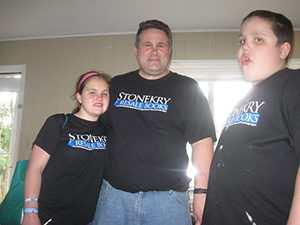
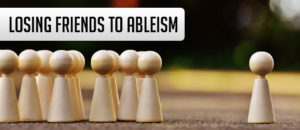 “I would’ve made sure it was accessible if we were closer friends.”
“I would’ve made sure it was accessible if we were closer friends.”